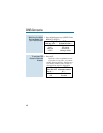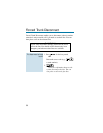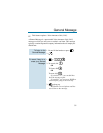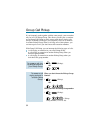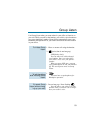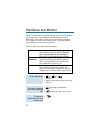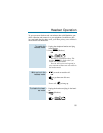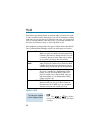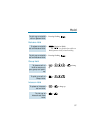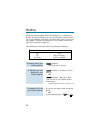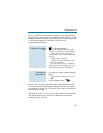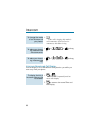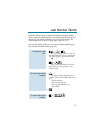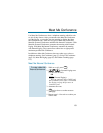
Don't place your handset down on the desk when you need your caller
to wait, use Hold instead. Hold places your call in a temporary waiting
state until you can get back to it. While the call waits, you can process
calls or use other features. And don't worry if you forget about the call
and leave it on Hold too long - it will recall back to you.
Your telephone system provides four types of Hold (see the chart below).
Your Communications Manager can tell you which types you can use.
System Hold
1.
The or key flashes
slowly while on Hold; flashes fast when
recalling.
To place an outside
call on System Hold:
System Hold For your normal calls . . .
When you place an outside call on System Hold,
it flashes your line key and the line keys on your
co-worker's phones as well. Either you or anoth-
er co-worker can pick up the call on Hold.
Exclusive For high priority calls . . .
Hold After you place an outside call on Exclusive Hold,
it flashes your line key but looks busy to your co-
workers. Only you can pick up the call from Hold.
Group Hold Put calls on Hold for your Department Group . . .
If you are a member of a Department Calling
Group, you can use Group Hold. When you
place an outside call on Group Hold, only you
and the members of your Department Calling
Group can pick it up.
Intercom Hold While talking to a co-worker . . .
Intercom calls can also go on Hold. However,
the Intercom call on Hold stays on your phone.
Another extension user cannot pick it up.
Hold
56



